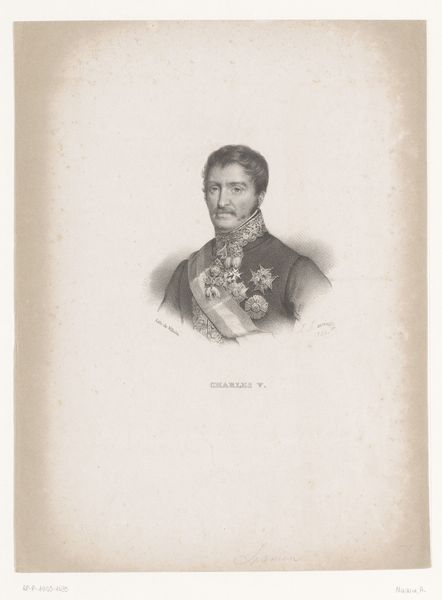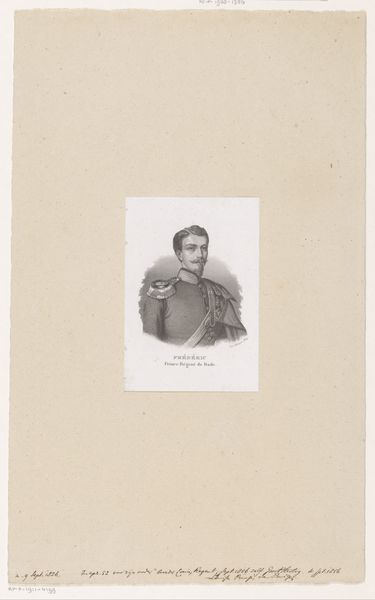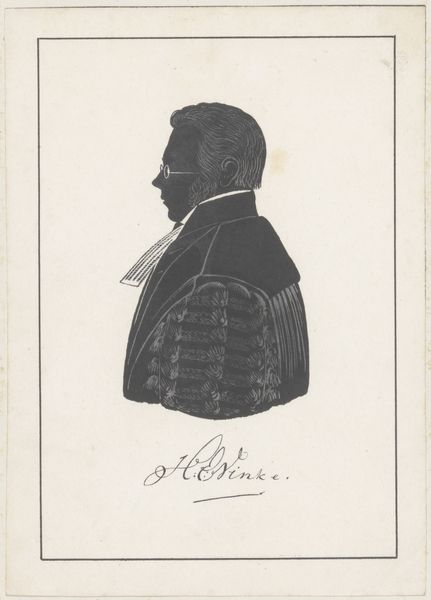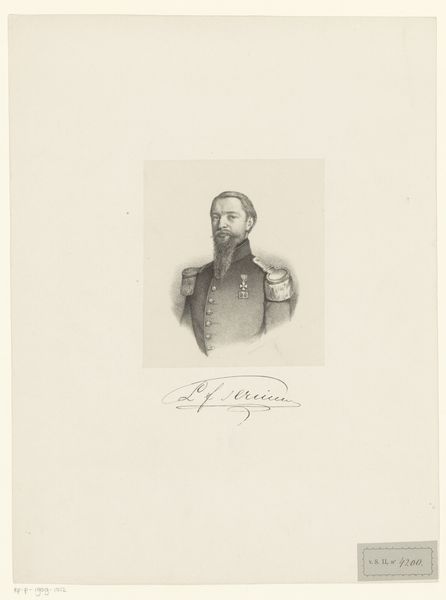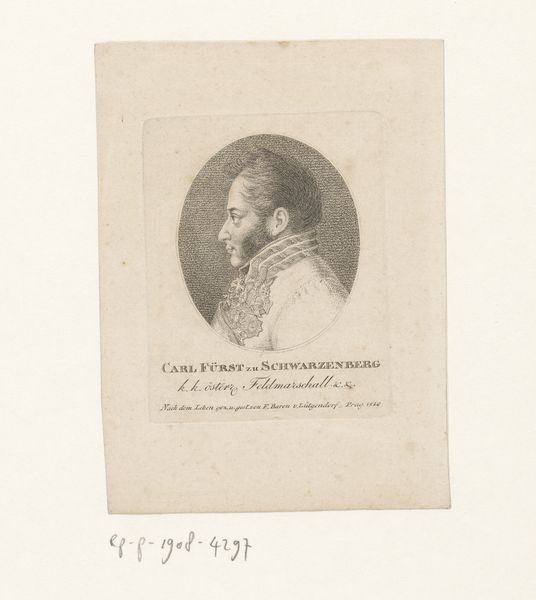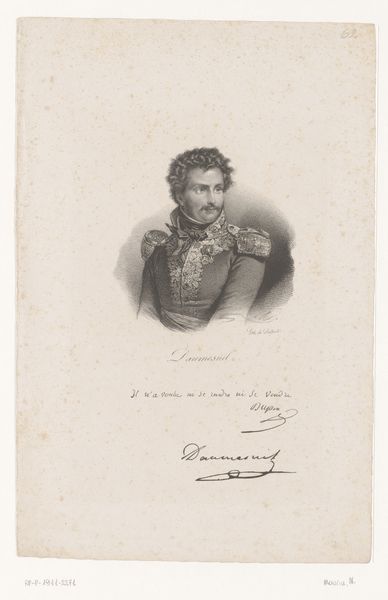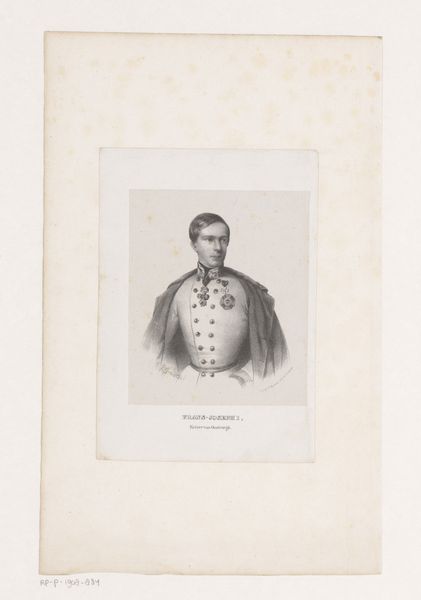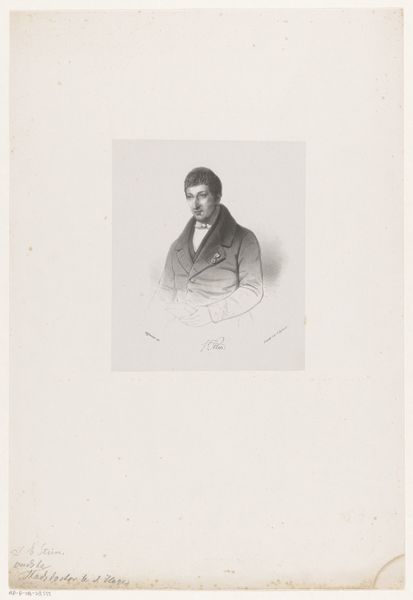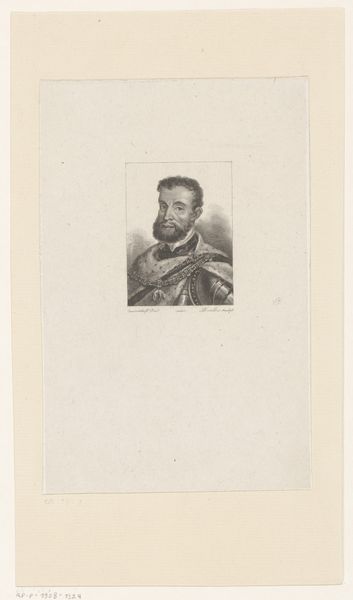
print, engraving
#
portrait
# print
#
romanticism
#
history-painting
#
engraving
Dimensions: height 160 mm, width 102 mm
Copyright: Rijks Museum: Open Domain
Franz Xaver Eissner produced this print of Wilhelm II von Hessen-Kassel in the 19th century, a time of significant social and political upheaval in Europe. Images like this served specific functions in that era. The print presents Wilhelm II as a dignified, powerful ruler, reinforcing his authority through visual codes of status: his formal attire, medals, and the regal ermine trim. This imagery would have been particularly resonant in the German states, where aristocratic rule was being challenged by emerging democratic movements. The print also speaks to the institutional history of portraiture, where images of rulers were tools of governance, designed to project power and legitimize authority. To understand this image more fully, we need to delve into the social history of the German aristocracy and the visual culture of 19th-century Europe. Scholarly articles, books, and archival documents can give insights into the social conditions that shaped its production. The meaning of this print is contingent on its social and institutional context.
Comments
No comments
Be the first to comment and join the conversation on the ultimate creative platform.
